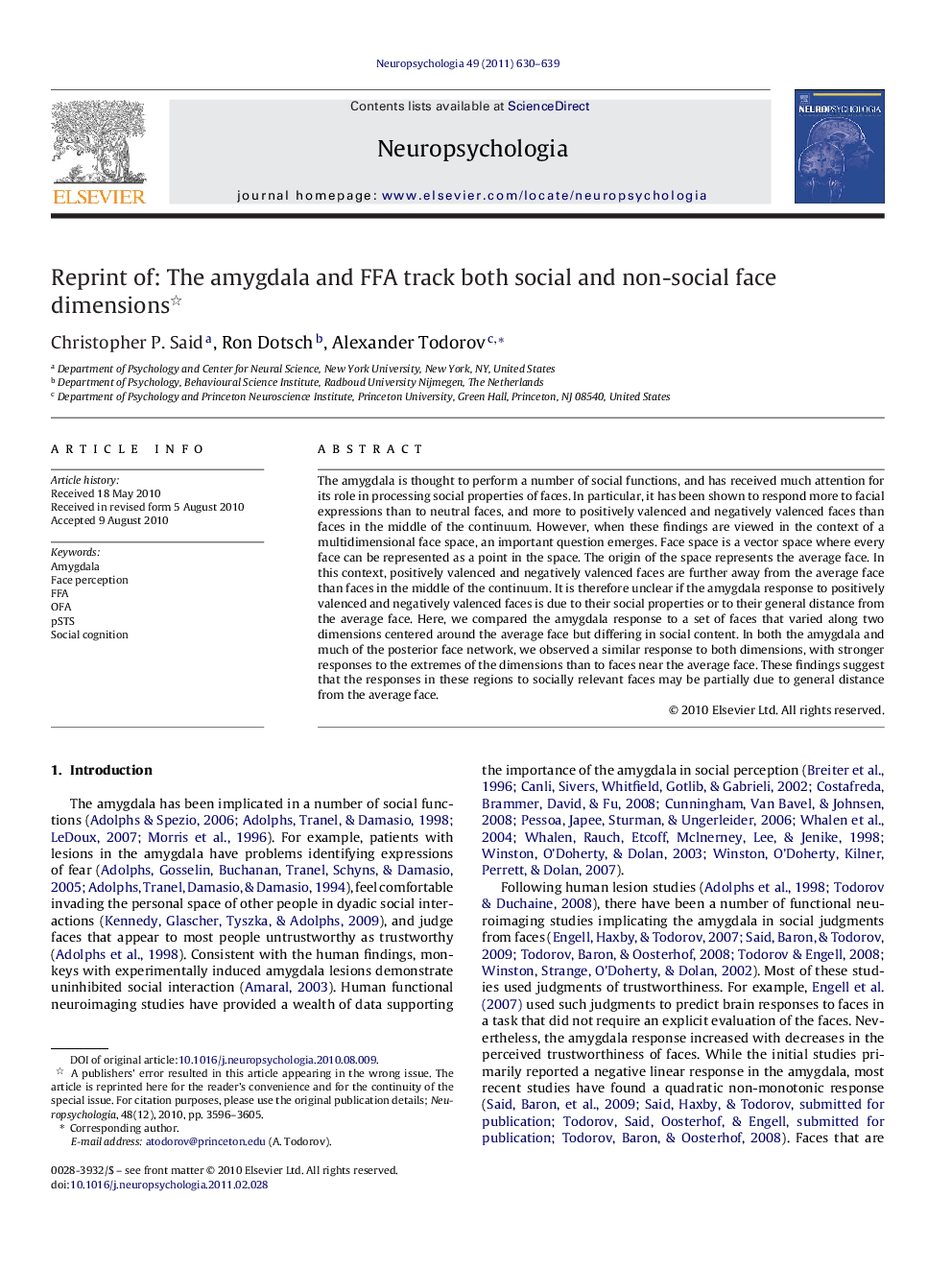| Article ID | Journal | Published Year | Pages | File Type |
|---|---|---|---|---|
| 10466029 | Neuropsychologia | 2011 | 10 Pages |
Abstract
The amygdala is thought to perform a number of social functions, and has received much attention for its role in processing social properties of faces. In particular, it has been shown to respond more to facial expressions than to neutral faces, and more to positively valenced and negatively valenced faces than faces in the middle of the continuum. However, when these findings are viewed in the context of a multidimensional face space, an important question emerges. Face space is a vector space where every face can be represented as a point in the space. The origin of the space represents the average face. In this context, positively valenced and negatively valenced faces are further away from the average face than faces in the middle of the continuum. It is therefore unclear if the amygdala response to positively valenced and negatively valenced faces is due to their social properties or to their general distance from the average face. Here, we compared the amygdala response to a set of faces that varied along two dimensions centered around the average face but differing in social content. In both the amygdala and much of the posterior face network, we observed a similar response to both dimensions, with stronger responses to the extremes of the dimensions than to faces near the average face. These findings suggest that the responses in these regions to socially relevant faces may be partially due to general distance from the average face.
Related Topics
Life Sciences
Neuroscience
Behavioral Neuroscience
Authors
Christopher P. Said, Ron Dotsch, Alexander Todorov,
